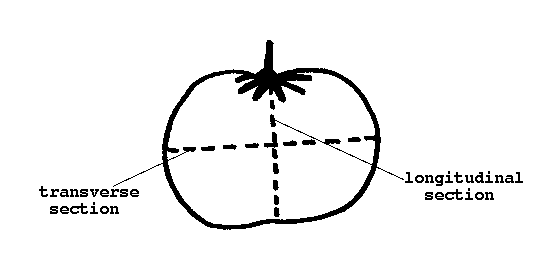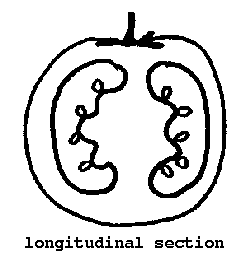Your Magic Garden Part 3. SEEDS!! Part 1
- Bonny

- May 19, 2020
- 7 min read

OMG FINALLY!!! I have been waiting for this moment for it feels like EVER! We have now chosen our location, we have learned about the sun, shade and what growing zones are...we have manifested magic together...today we get to talk......SEEDS!!!
Before we get started, know before you grow.
There are more than one kind of seed out there. Depending on the type of plant you want to sow, some can continue to regrow year after year, while others have to be planted during planting seasons, indoors or can even be grown on your kitchen counter. With so much information and variables how do you know what is what and what the difference Is? Well...B. did the research for you!
Annuals: An annual plant is a plant that completes its life cycle, from germination to the production of seeds, within one growing season, and then dies. The length of growing seasons and period in which they take place vary according to geographical location, and may not correspond to the four traditional seasonal divisions of the year. With respect to the traditional seasons annual plants are generally categorized into summer annuals and winter annuals. Summer annuals germinate during spring or early summer and mature by autumn of the same year. Winter annuals germinate during the autumn and mature during the spring or summer of the following calendar year.
Perennial: A perennial plant or simply perennial is a plant that lives more than two years.[1] Some sources cite perennial plants being plants that live more than three years. The term (per- + -ennial, "through the years") is often used to differentiate a plant from shorter-lived annuals and biennials. The term is also widely used to distinguish plants with little or no woody growth from trees and shrubs, which are also technically perennials.
Biennial: A biennial plant is a flowering plant that takes two years to complete its biological life cycle. In the first year, the plant grows leaves, stems, and roots (vegetative structures), then it enters a period of dormancy over the colder months. Usually the stem remains very short and the leaves are low to the ground, forming a rosette. Many biennials require a cold treatment, or vernalization, before they will flower. During the next spring or summer, the stem of the biennial plant elongates greatly, or "bolts". The plant then flowers, producing fruits and seeds before it finally dies. There are far fewer biennials than either perennial plants or annual plants.
Pretty sinchy right? But very helpful when it comes to knowing which seeds you want or when looking at creating a budget for your garden. But did you know there are differences in the type of seeds you buy? Well neither did I until I began this journey.
The two main differences in seeds are Hybrids and Heirlooms. And then...what the hell is GMO and what is organic? Why does any of this matter?
Heirloom Seeds:
Heirloom seeds come from open-pollinated plants that pass on similar characteristics and traits from the parent plant to the child plant. There is no concrete definition that every gardener uses to define heirloom plants. Some people state that heirloom plants are those that were introduced before 1951, while others state that heirloom varieties are those introduced before the 1920's. In general, you should consider heirlooms to be seeds that are possible to regrow and pass on from one generation to the next.
One important thing to note for heirloom plants is whether they are organic or non-organic. In most cases, heirloom plants are organic because they are generally only used by small-scale gardeners who do not use pesticide or other harmful chemicals. However, there may be minor cases when chemicals do get involved since heirloom plants do not always have a similar level of innate protection that hybrid and GMO plants provide against diseases and pests. Remember, heirloom refers to the heritage of a plant, while organic refers to a growing practice. They are two different things.
Hybrid Seeds:
There are some distinct differences that one should be aware of when it comes to heirloom, hybrid and GMO plants. First, heirloom plants are the only ones that breed true. As mentioned earlier, this means the same characteristics are passed on from generation to generation. The same cannot be said for hybrid and GMO. Hybrid plants are produced when different varieties of plants are cross-pollinated, which can happen with or without human intervention. Because there are different varieties of plants involved, it can’t be guaranteed that the offspring of hybrid plants produces identical traits as the parent plant.
Both heirloom and hybrid plants can be viewed as natural occurrences. GMO plants, on the other hand, can only be produced using unnatural methods such as gene splicing. Scientists essentially modify a seed’s DNA to ensure the resulting plant produces the desired traits and characteristics. A common example of a GMO plant is Bt-Corn.
GMO:
A genetically modified organism (GMO) is any organism whose genetic material has been altered using genetic engineering techniques. The exact definition of a genetically modified organism and what constitutes genetic engineering varies, with the most common being an organism altered in a way that "does not occur naturally by mating and/or natural recombination". A wide variety of organisms have been genetically modified (GM), from animals to plants and microorganisms. Genes have been transferred within the same species, across species (creating transgenic organisms) and even across kingdoms. New genes can be introduced, or endogenous genes can be enhanced, altered or knocked out.
Organic:
USDA certified organic foods are grown and processed according to federal guidelines addressing, among many factors, soil quality, animal raising practices, pest and weed control, and use of additives. Organic producers rely on natural substances and physical, mechanical, or biologically based farming methods to the fullest extent possible.
Produce can be called organic if it’s certified to have grown on soil that had no prohibited substances applied for three years prior to harvest. Prohibited substances include most synthetic fertilizers and pesticides. In instances when a grower has to use a synthetic substance to achieve a specific purpose, the substance must first be approved according to criteria that examine its effects on human health and the environment.
Let's get growing
Now that we have a basic understanding of the variations of seeds...lets talk where to get them. The first thing to understand is that you throw a million seeds away a year. Think about it, tomatoes, peppers and cucumbers all have a ton of seeds in them to begin with. You can save these seeds very easily. If you choose to use this method, my advice is that you use the best looking and tasting fruits to harvest seeds from. The seeds that you harvest will produce and exact copy of the fruit you took them from. Think about it like you are creating a clone of the original. So long as you continue to use this method, you will always produce the same size plant, leaves, yield as well as size and shape as you started with. This is seriously the most cost effective way of harvesting seeds. It pays for itself time and time again and you will always know what you are getting. Eventually, it could even begin to make money for you to buy...more seeds.
How do you harvest your own seeds?
We have learned 2 ways in which to harvest seeds thus far. We are going to share them both with you but we are still learning this process and will update you as we learn new things. The easiest way for me to teach this is breaking down which plants I have been taught so far to harvest seeds from and the way I learned.
BTW, I on occasion call tomatoes..Maters. It's just me, I nickname everything but you will learn about this along the path. I've also been know to call Squash...Squish. I am just a silly goose like that sometimes. O.k. one more...I also call asparagus...asparagoose. So, there is that!
Fermenting Seeds and why
I know of two ways of harvesting seeds currently, drying them or fermenting them. Yes, that is right, I did say fermenting. No, we are not going to make some yummy cocktail, its a way of separating the slimy pulpy sack that normally surrounds a tomato seed, or other types of fruits and veggies that have a pulp surrounding the seed. We are going to use maters in this example just to narrow it down a little better. We all know tomatoes...right? Well...You know the red crap or slimy stuff that surrounds a tomato seed? That stuff is some kind of awesome. It actually prohibits the germination process of the seeds until it can be planted in solid ground. Bet ya didn't know that!
Fermentation removes germination inhibitors and the gelatinous sheath from seeds, and it may treat some seed-borne diseases. Properly stored tomato seeds may remain viable for over six years! Dude, WORTH IT! This about it...you will never have to pay for another mator again. That's pretty awesome ya all!
O.k. so you can get an idea of the anatomy of a mator...check this out.
We will go way further into that can of corn later...there is so much to learn! I have just learned to Ferment tomato seeds so rather an me boring you with a ton of more words to read...let's check out the vid!
Pretty sinchy, right? Like there is nothing here that would make you NOT want to do this. Just be sure that you store them well, something we will talk about in my next blog SEEDS! Part 2. But for real, you just saw how easy it was for me...now, it's your turn to try it. Post your process, tips or comment if you have any questions! We are here to help you grow.
Drying Seeds
For this example I am going to use a Banana Pepper but any pepper variety can be used. This seed type does not have a pulp around it. So there is no need to Ferment them. Instead we are just going to dry them out.
Same rules apply when it comes to maturity, size and taste, you want to be sure that the fruit you took them from is our desired result, whatever you take them from will be your exact end result. This is best picked from a garden but can be done with a pepper you buy at any store.
Then remove the seeds from the peppers. Inspect them and remove any that are damaged or discolored, then spread them out on paper towels or newspaper to dry. Place the drying seeds in a warm area out of direct sunlight. Seeds only need two things to grow, water and sunlight so you want to make sure whatever you are storing them in is out of the sun and away from moisture. The B. Hive has decided to use recycled baby food jars as storage to cut down on our carbon footprint. Turn the seeds every couple of days to make sure the bottom layer is drying as well. Once they are completely dry...store them away. Correctly stored peppers seeds can last for many years, although the germination rate begins to wane as time goes by.
BOOM...DONE!
While everyday is a new learning experience you will tend to pick up information rather quickly. There is nothing intimidating about starting your own garden, filling it with amazing foods nor walking a journey into a happier, healthier you. It is just one step at a time along the path.





Comments